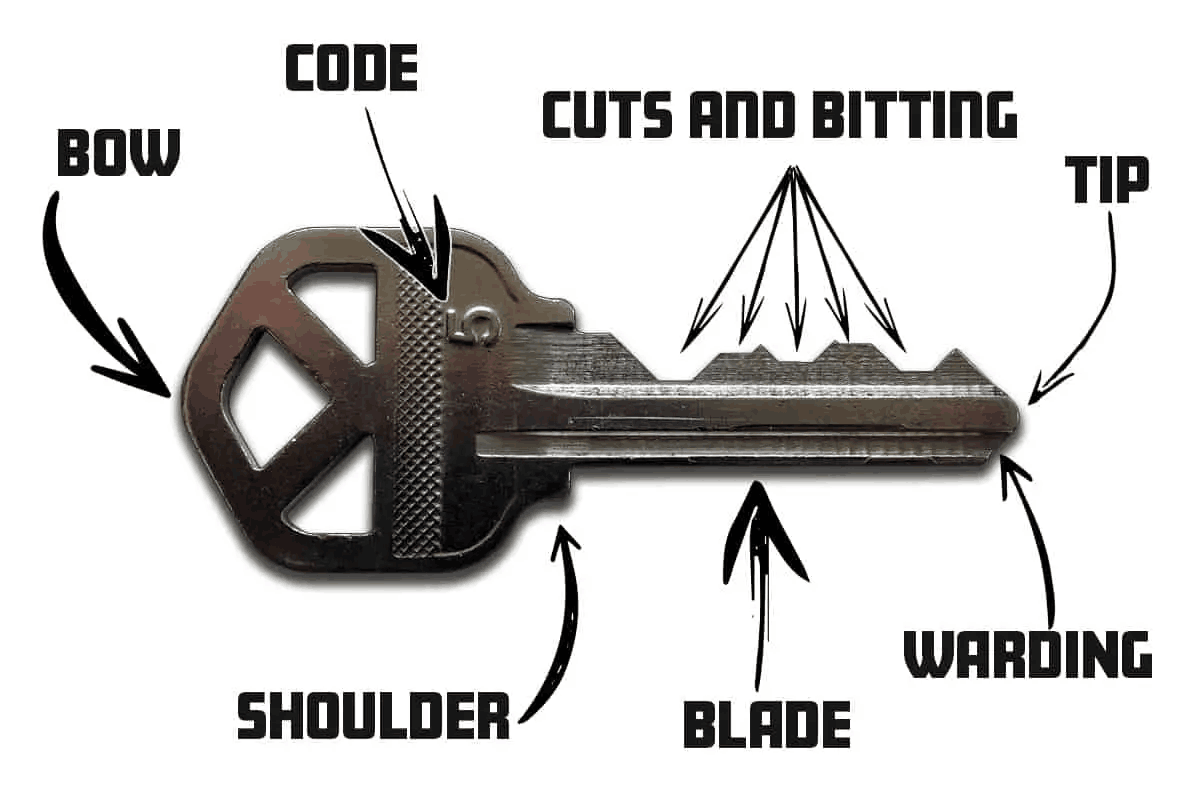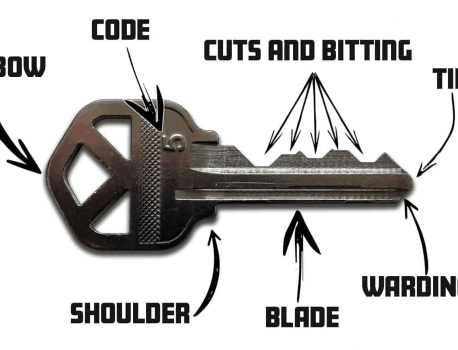The internal components of a lock align when a key is inserted, unlocking the lock. A key is a physical tool used to open furniture and door locks. Electronic data is transmitted rather than physically manipulated by the keys in electronic locks. The key acquires additional meaning as a result of its employment as a sign of knowledge, authority, accountability, and trust. We can claim that a key is a problem-solving tool because, like locks, keys come in a variety of sizes and shapes. You will learn about the nine components of a key in this post, and you can purchase enough Lock Picking Tools at lockpickmall.com to aid in the unlocking process.
The Blade
The blade, which is the longer portion of the key that is placed into the lock cylinder and contains the cutting, biting, guard, and point, is also its functional portion. The edge with the cutout is on the top of the key, while the edge across from the cutout is on the bottom.
The Bow
The majority of the keys we grasp in our fingers while operating them are bows. It varies by manufacturer and can be circular or rectangular. It includes details on the name, code, and type of the manufacturer. As bows are frequently proprietary, it is simple to connect keys to a particular supplier.
The Shoulder
The key’s shoulder, which joins the bow to the blade, stops the key from being inserted farther and enables the lock’s cutout to be placed precisely.
The Tip
The blade’s end is in the front, away from the bow. It is the first component to enter the keyway. To align the cut and stop the key, some locks use a point.
The Cuts
The cutouts where the key bites are located here. The internal components of the door lock or pieces of furniture are fastened using the cutouts so that the key may operate the locking mechanism and open the door. Crucial cuts play a crucial role. To restructure the cylinder, the primary incisions are positioned and contoured to the depth necessary. Depending on the type of lock you employ, these areas will vary in height, width, and depth.
The Warding
The blade of the key is twisted to prevent it from fitting into a particular key slot in a lock. This is the defense lock’s primary technique.
The Bitting
This area of the key interacts with the key internals directly. The internal pieces can be positioned differently because of the cuts in the articulation.
The Code
The keybow may have inscriptions that provide varied details about the specific key.
Typically, a keybow will contain the following items:
details about the manufacturer, including their name or emblem.
what kind of keyway the guard corresponds to.
the sound of keys being bit.
Certain codes must be broken down using a manufacturer’s codebook. Indirect key codes are what they are.
How the Key Works
The lowest row of pins—the key pins—are pushed up when the key is inserted into the plug. The key pin will rise into place and no longer prevent the lock from opening because the key bite and key pin length are reduced to match.
Hope this explanation of a key’s various components and their functions in a lock has been helpful. If you’re interested in learning more about lockpicks, stop by the store to see our assortment of Locksmith Tools.


